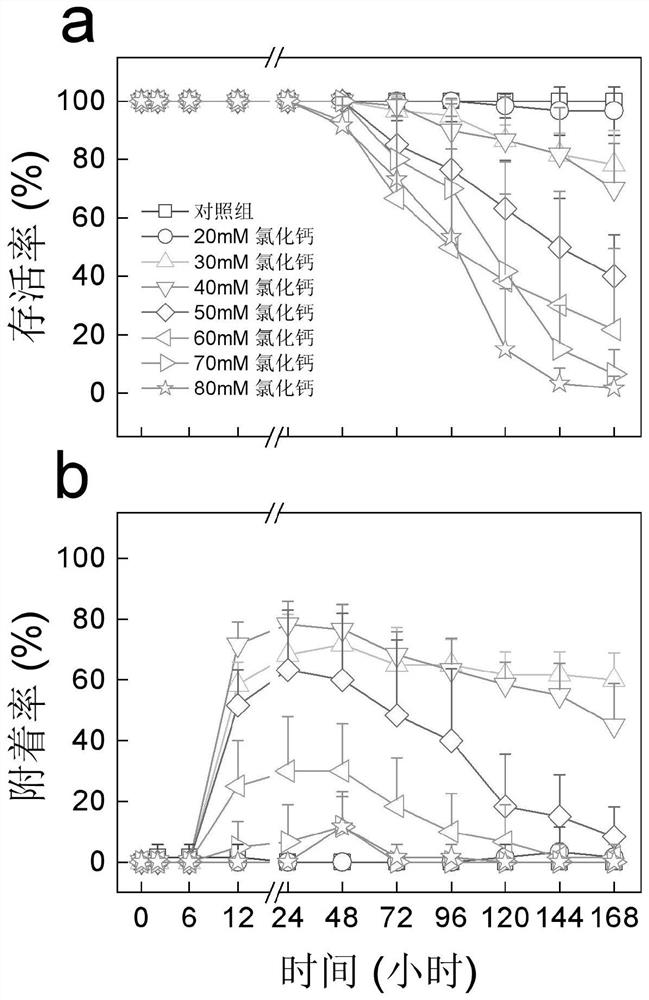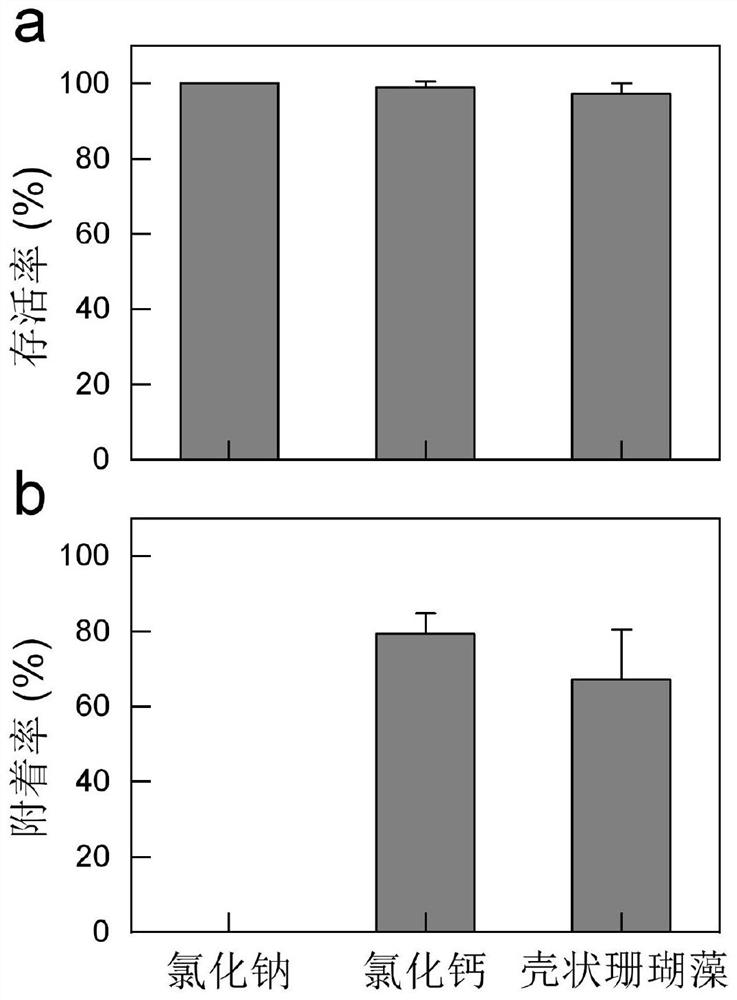Method for improving adhesion of coral larvae
A technology for corals and larvae, applied in the field of coral breeding, can solve the problems of attachment to algae and the influence of environmental factors, and achieve the effects of shortening the required time, improving the attachment rate and simple operation
- Summary
- Abstract
- Description
- Claims
- Application Information
AI Technical Summary
Problems solved by technology
Method used
Image
Examples
Embodiment 1
[0022] Example 1 Determining calcium ions have the ability to induce coral larvae attachment
[0023] In September 2018, the antlers cup-shaped coral from Sanya City, Hainan Province, was collected for experimental subjects, relying on the Hainan Tropical Marine Biological Experimental Station, South China Sea Institute, China Academy of Sciences.
[0024] The collected antler cup coral larvae is placed in a six-hole plate in natural sea water. Use natural seawater to configure different concentrations of sodium chloride, calcium chloride, calcium sulfate solution. Then, in the natural seawater in the six-hole plate, that is, the final concentration of 10 mm, 40 mm, 80 mm, 10 mm, calcium chloride, calcium sulfate and calcium carbonate solution, respectively, on the basis of natural seawater, 10 mm and 40 mM. figure 1 ), In the culture temperature of 28 ± 0.5 ° C, 12-12h, light and dark circulation, light 200 μmol photons m -2 s -1 Under the conditions, cultured coral larvae, after...
Embodiment 2
[0025] Example 2 Determined calcium chloride optimal induction concentration
[0026] In September 2018, the antlers cup-shaped coral from Sanya City, Hainan Province, was collected for experimental subjects, relying on the Hainan Tropical Marine Biological Experimental Station, South China Sea Institute, China Academy of Sciences.
[0027] The collected antler cup coral larvae is placed in a six-hole plate in natural sea water. Use natural seawater to configure a specific concentration of calcium chloride solution. In the natural sea water in the six-hole plate, that is, the final concentration is 20-80 mm based on the natural sea water, and the final concentration is 20-80 mm, and the culture temperature is 28 ± 0.5 ° C, 12-12h light dark cycle, and the light 200 μmol photons m -2 s -1 Coral larvae was cultured under conditions, and 7D was allowed to culture 7d and the survival rate and admission rate were observed, each treatment 6 repetitions. This example continuously process...
Embodiment 3
[0028] Example 3 Exploring the induction capabilities of calcium ions and shell coral locus for 24h
[0029] In August 2019, the antlers cup-shaped coral from Sanya City, Hainan Province, was collected for experimental subjects, relying on the Hainan Tropical Marine Biological Experimental Station of the South China Sea Institute of China.
[0030] The collected antler cup coral larvae is placed in a six-hole plate in natural sea water. The experimental group was added to the natural seawater in the six-well plate (final concentration), and the control group was placed in a control group to add 40 mm sodium chloride and shell-shaped coral algae, at the culture temperature of 28 ± 0.5 ° C, 12-12H. Dark loop, light 200μmol photons m -2 s -1 Under the conditions, the coral larvae attached under treatment was followed, and the process of cultivation did not change water, not inflated, and each treatment was 4 repetitions. Take the shell coral algae used by the experiment, collect self...
PUM
 Login to View More
Login to View More Abstract
Description
Claims
Application Information
 Login to View More
Login to View More - R&D
- Intellectual Property
- Life Sciences
- Materials
- Tech Scout
- Unparalleled Data Quality
- Higher Quality Content
- 60% Fewer Hallucinations
Browse by: Latest US Patents, China's latest patents, Technical Efficacy Thesaurus, Application Domain, Technology Topic, Popular Technical Reports.
© 2025 PatSnap. All rights reserved.Legal|Privacy policy|Modern Slavery Act Transparency Statement|Sitemap|About US| Contact US: help@patsnap.com



